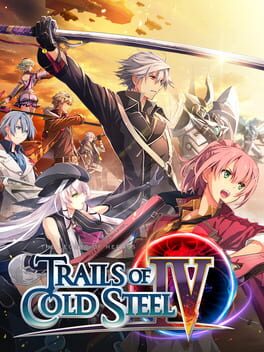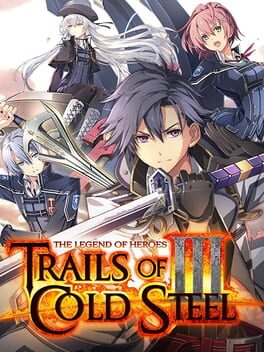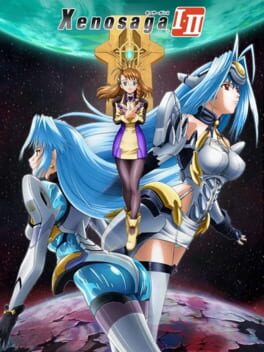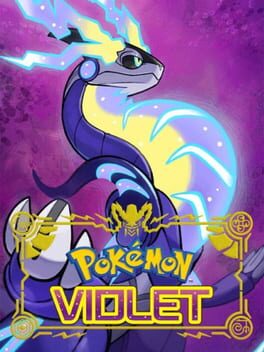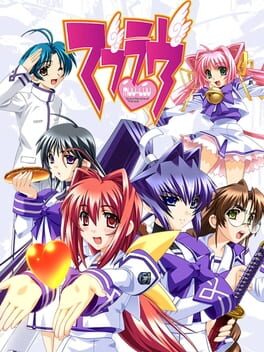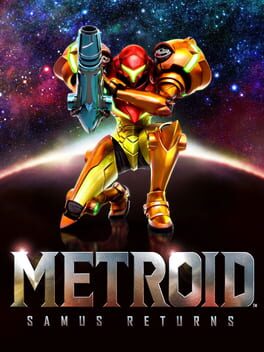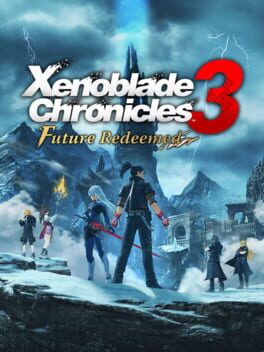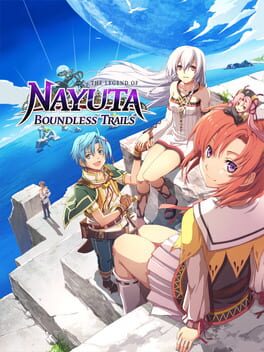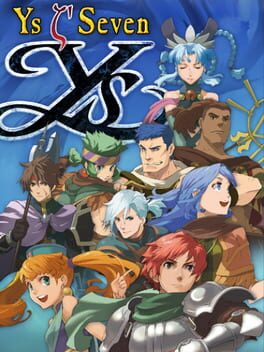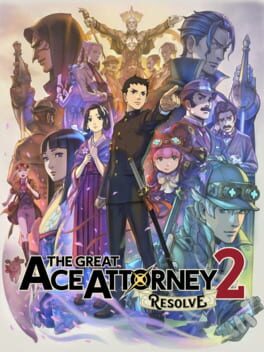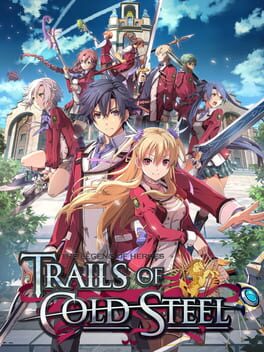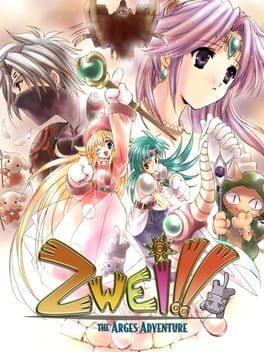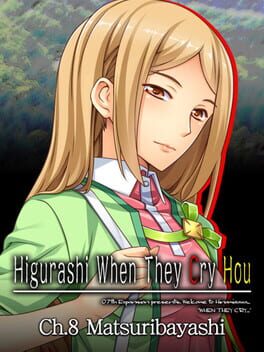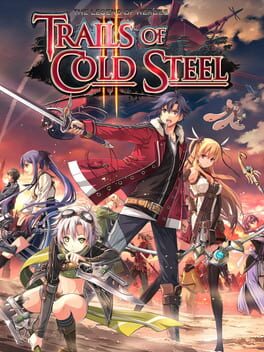This review contains spoilers
The best part of this game is when it ends.
I'm still not quite sure how to critique this game. In some ways, this game is the natural followup to everything CS3 had built up. It represents the oversaturation of a series which spent over a decade and a half adding characters upon characters without knowing what to really do with them. The bottom line, is at the end of the day, this game is only one thing for certain: it's bad.
I, notoriously, hated Cold Steel III. The game that everyone said was the best Cold Steel game leading up to it. People conversely acted like CS4 was the worst piece of fiction ever made, so my expectations going in were very low. I already hated CS3, so you're telling me there's something even WORSE?
As such, this review might read like a comparison piece between CS3 and 4. I really don't know what to think about this game on its own since so many of its issues stem from CS3, and to go even further, how this game handles plot points from all of its preceding games significantly impacts my impressions of it. That might be part of the reason why this game felt like a load of nothing to me—it DOESN'T stand on its own. It doesn't stand up for itself. It has no merit without having played all the previous games prior to it, it is consistently only acting to bring Cold Steel to an end.
=ACT 1: Gameplay=
This game plays pretty much identically to Cold Steel 3, but gives you a lot more freedom when roaming the world—like in CS2. As someone who typically talks to all the NPCs in a Trails game, this can be overwhelming. However, the fast travel menu is incredibly robust and tells the player when there was something new to interact with in any particular area. For me, this made it easy for me to mindlessly do an NPC sweep without worrying too much about whether I missed anything. What also helps immensely is that hidden quests and hidden items (such as book chapters) are all marked on the minimap, although you need to actually travel to the area to be able to see it first. Thanks to this improved quality of life, however; it made the gameplay experience of Cold Steel 4 much smoother than normal. This is something I think Trails games have been consistently improving upon since Cold Steel 1, and I'm glad to see these have improved to this point.
I will say though, there was a sort of charm to finding a hidden quest or hidden item yourself without having your hand held by the game, so part of me is mixed on these improvements, but overall I believe they are for the better when the side content in these games are normally significant enough to be of value to your understanding of the world, story and characters... which is not something I can say about CS4's side content! Most of the side quests in this game are abysmal! I will touch on these later, however.
Battle mechanics remain the same as in Cold Steel 3 with very little change. For full disclosure, I played this game on the Normal difficulty setting.
The usual bell/cast spam works with arts, and craft spam is the way to go with this game as usual. Issues arise with the amount of party members you get in this game, since there's no realistic way you're going to be working on optimising the equipment and orbments of all 37 of them, so the game seems like it was balanced around that idea—it's piss easy. I quickly realised that it's not really worth spending much time in optimising or grinding since this game is so easy that just a modicum of optimisation into even just three main party members will get you through the entire game. I similarly began to run by enemies with frequency because levels don't matter either, you gain them fast enough to keep up if you're underlevelled and it's very easy to kill enemies while underlevelled anyway. S-Craft spam is a strategy that remains sound, especially when you sometimes have up to 4 support members who will come in and take the place of your main party if they were all K.O.'d.
Ultimately, the gameplay segment of this game is as mindless as it has ever been, perhaps even more so than CS3, but it is still a fair amount of fun to play, it's just not very deep so it can get boring very quickly.
=INTERMISSION: Music=
KINGA COOKED!!!!!!!!! DEEP CARNIVAL BEST TRACK IN THE GAME!!!! PEAK OST!!!!
Despite what they might say, I do think I enjoyed the new tracks in this game more than what CS3 had to offer, but I can't help but feel that Falcom OSTs are starting to, overwhelmingly, just be "there" these days. I am aware Falcom pretty much has no sound director role and the composers don't even have input on where their tracks are used in the game, but this is DIRE. I barely even realised that there was a new motif written for CS4 by Takahiro Unisuga and I only know that because my stream chat told me. There was nothing about this game's music usage that communicated this to me, and I almost think the soundtrack direction actively ruined the experience half the time. The reason this section of the review is so awkwardly put in between the gameplay and story segments is because I deadass forgot to talk about the OST... me, the OST guy. This is getting real bad guys.
=ACT 2: Story=
This game is split up into a prologue, three acts, an intermission, and a finale. It is pretty much identical in scope and structure to CS2, a game which I also wasn't a huge fan of at first but have come to like more in hindsight. In many ways, this game is just Trails of Cold Steel II-2. In execution, however, this game falls flat in comparison.
I enjoyed Act 1 of this game, I really did. I liked it way more than I had enjoyed almost any moment of CS3. I don't think much really happens in it, but making it such a relatively focused gameplay experience while taking the focus away from Rean gives such us such a unique lens to view the current situation of Erebonia, even if it's just taking a bite out of CS2's piece of the pie. I really do like Act 1.
However, that, is where my praise for the story ends.
Playing this game feels like going through a checklist of character moments organised in such a segmented fashion that there's barely a coherent plot. It makes for a hollow experience because by the time you're not even a quarter into the game you start to realise that all you're doing is getting everyone on your side before going to the final confrontation, including characters who were previously thought to be dead. Half of this isn't even necessary to do either, they artificially make more content by having characters change allegiances on a dime just so the main party has another character to seduce over to their side with an anime pep talk. In most cases, these only occur to give OTHER characters their 'character moment' for the game which usually amounts to just convincing their friend or relative to change back to the heroes' side. Most of this, is effectively filler.
On the flip side to this, you have the bonding events which probably feature some of the best writing this game has to offer, at least as far as the non-romance scenes go. Almost all of these felt like they had substance for each of the characters involved. The issue here then stems from the main story being predominantly filler—why wasn't this incorporated into the main story?
Similarly, most of the side quests in this game typically fall into one of two categories:
1. "oh no.... the curse got them...."
2. Appearance of a significant character with 'stakes'
I'll touch on the curse in a moment, but when you KNOW that it's a side quest and important main characters and even antagonists show up, you already know there will be no stakes. They can't do anything significant enough to affect the main story, otherwise they can't have their important moment take place when it REALLY matters. It just makes me wonder why a lot of this was shelved for side content rather than being meaningful content for the main story, because as it stands the plot is incredibly flat.
There really is no way to discuss this game's story without bringing up The Curse. The damage this single concept has done to this series in immeasurable. Not only is it inconsistent with itself, it actively ruins past parts of the series. There is no consistency to how it behaves, probably the only consistent thing about this curse is that it somehow respects state borders? As a result, the way it gets used also suffers. It actively goes AGAINST every single character motivation of Chancellor Osborne prior to this game and ruins his character. It'll rewrite memories to get NPCs to behave in a certain way, but it'll also physically force Count Arseid to comply without rewriting his memories? It's such a mess.
The curse is used well about... 10% of the time maybe? I think Ash beating the curse allegations at the start of Act 1 was fairly powerful albeit a bit abrupt, and Cedric's arc in the finale of the game was surprisingly engaging despite it all because it worked in tandem with his existing motivations from the previous games. I'm not saying the concept doesn't have potential on paper, however; in execution it caused irreparable damage to anything Cold Steel could have potentially achieved by the end of its life.
A Japanese review I read said the curse is a plot point "an elementary schooler could've come up with" and I don't think more accurate words have been said. This story is a meme and so are the characters.
=ACT 3: Legacy=
How does it feel seeing the characters you love having their personalities stripped to nothing?
This is the first game in the series to bring back so many characters in the series, but they really serve so little purpose in the story it's laughable. It's really sad to see that all these characters amount to are character traits now—some which even DOUBLE UP on characters we already have in Cold Steel alone, so having their presence even just for the party dynamic feels excessive. Any two characters meeting for the first time feels like "oh haha look we're similar" or "oh haha we have a mutual friend" and there's really nothing of substance here.
Some of these characters return specifically just to make other characters look better. Cassius came back JUST to make Rean into a divine blade, which, huh? Where did that come from? This was never a goal or anything of the previous games and suddenly I'm supposed to believe that Rean is on the same level as Arios or Cassius despite him being such a non-presence in the story of CS3 and 4, it's such a weird moment.
Getting to finally meet Elie's mum is cool, but seeing the ghosts of Hamel felt like an awkward re-appropriation of an old event just to milk a plot point that had already been tied up neatly in previous games. Not to mention, Loewe coming back from the dead to say 2 lines is comical. On top of that, WE PLAY VANTAGE MASTERS OVER LOEWE'S GRAVE. WITH JOSHUA.
I don't understand Lechter or Claire's motivations anymore. Lechter, a character who has been cooking since Trails in the Sky the 3RD even had nothing good come of him. He wanted to avoid a war in previous titles, so why were all his actions from CS3 onwards to instigate one? Nothing makes sense anymore. This is just but one of the many wasted setups from Sky 3rd. If they were going to retcon out Sky 3rd stuff, why didn't they cut out the Tita and Agate jokes?
There is nothing in this game that doesn't feel outright disrespectful to the series' legacy. I think it's outright blasphemy to even call it "fan-service", it actively depreciates everything that has been building up until this point and then proceeds to rub salt in the wound AND spit in its face.
=FINALE: Where to next?=
To my surprise, this game wasn't any worse than CS3, nor was it better. It was perfectly in line with everything I hated about CS3, but somehow managed to have moments that I did care about despite it all. I would describe this game as having higher highs than CS3, but ASTRONOMICALLY lower lows than CS3, but I'm not sure I could say which I hate less.
CS3 set CS4 up to fail. I am convinced this is the unadulterated truth about these last two games in this series. My expectations were already low because of CS3 and thus I was kinda ready for CS4 to also be a mess, but when everyone acted like CS3 was the best CS game and CS4 was the worst piece of media to ever be created, I'm not sure I was expecting to feel so much... the same about both games.
Falcom company president Toshihiro Kondo once said that part of Reverie's reason for existing is to try to make up for some of CS4's failings. I have heard nothing but praise for the game, and also that it tries to backtrack on a few points from CS4. I don't know how salvageable this series is moving forward, but I will let them cook and see.
Despite it all, I am just glad it is over and I can finally get onto playing good games again. Thank you for reading.
I'm still not quite sure how to critique this game. In some ways, this game is the natural followup to everything CS3 had built up. It represents the oversaturation of a series which spent over a decade and a half adding characters upon characters without knowing what to really do with them. The bottom line, is at the end of the day, this game is only one thing for certain: it's bad.
I, notoriously, hated Cold Steel III. The game that everyone said was the best Cold Steel game leading up to it. People conversely acted like CS4 was the worst piece of fiction ever made, so my expectations going in were very low. I already hated CS3, so you're telling me there's something even WORSE?
As such, this review might read like a comparison piece between CS3 and 4. I really don't know what to think about this game on its own since so many of its issues stem from CS3, and to go even further, how this game handles plot points from all of its preceding games significantly impacts my impressions of it. That might be part of the reason why this game felt like a load of nothing to me—it DOESN'T stand on its own. It doesn't stand up for itself. It has no merit without having played all the previous games prior to it, it is consistently only acting to bring Cold Steel to an end.
=ACT 1: Gameplay=
This game plays pretty much identically to Cold Steel 3, but gives you a lot more freedom when roaming the world—like in CS2. As someone who typically talks to all the NPCs in a Trails game, this can be overwhelming. However, the fast travel menu is incredibly robust and tells the player when there was something new to interact with in any particular area. For me, this made it easy for me to mindlessly do an NPC sweep without worrying too much about whether I missed anything. What also helps immensely is that hidden quests and hidden items (such as book chapters) are all marked on the minimap, although you need to actually travel to the area to be able to see it first. Thanks to this improved quality of life, however; it made the gameplay experience of Cold Steel 4 much smoother than normal. This is something I think Trails games have been consistently improving upon since Cold Steel 1, and I'm glad to see these have improved to this point.
I will say though, there was a sort of charm to finding a hidden quest or hidden item yourself without having your hand held by the game, so part of me is mixed on these improvements, but overall I believe they are for the better when the side content in these games are normally significant enough to be of value to your understanding of the world, story and characters... which is not something I can say about CS4's side content! Most of the side quests in this game are abysmal! I will touch on these later, however.
Battle mechanics remain the same as in Cold Steel 3 with very little change. For full disclosure, I played this game on the Normal difficulty setting.
The usual bell/cast spam works with arts, and craft spam is the way to go with this game as usual. Issues arise with the amount of party members you get in this game, since there's no realistic way you're going to be working on optimising the equipment and orbments of all 37 of them, so the game seems like it was balanced around that idea—it's piss easy. I quickly realised that it's not really worth spending much time in optimising or grinding since this game is so easy that just a modicum of optimisation into even just three main party members will get you through the entire game. I similarly began to run by enemies with frequency because levels don't matter either, you gain them fast enough to keep up if you're underlevelled and it's very easy to kill enemies while underlevelled anyway. S-Craft spam is a strategy that remains sound, especially when you sometimes have up to 4 support members who will come in and take the place of your main party if they were all K.O.'d.
Ultimately, the gameplay segment of this game is as mindless as it has ever been, perhaps even more so than CS3, but it is still a fair amount of fun to play, it's just not very deep so it can get boring very quickly.
=INTERMISSION: Music=
KINGA COOKED!!!!!!!!! DEEP CARNIVAL BEST TRACK IN THE GAME!!!! PEAK OST!!!!
Despite what they might say, I do think I enjoyed the new tracks in this game more than what CS3 had to offer, but I can't help but feel that Falcom OSTs are starting to, overwhelmingly, just be "there" these days. I am aware Falcom pretty much has no sound director role and the composers don't even have input on where their tracks are used in the game, but this is DIRE. I barely even realised that there was a new motif written for CS4 by Takahiro Unisuga and I only know that because my stream chat told me. There was nothing about this game's music usage that communicated this to me, and I almost think the soundtrack direction actively ruined the experience half the time. The reason this section of the review is so awkwardly put in between the gameplay and story segments is because I deadass forgot to talk about the OST... me, the OST guy. This is getting real bad guys.
=ACT 2: Story=
This game is split up into a prologue, three acts, an intermission, and a finale. It is pretty much identical in scope and structure to CS2, a game which I also wasn't a huge fan of at first but have come to like more in hindsight. In many ways, this game is just Trails of Cold Steel II-2. In execution, however, this game falls flat in comparison.
I enjoyed Act 1 of this game, I really did. I liked it way more than I had enjoyed almost any moment of CS3. I don't think much really happens in it, but making it such a relatively focused gameplay experience while taking the focus away from Rean gives such us such a unique lens to view the current situation of Erebonia, even if it's just taking a bite out of CS2's piece of the pie. I really do like Act 1.
However, that, is where my praise for the story ends.
Playing this game feels like going through a checklist of character moments organised in such a segmented fashion that there's barely a coherent plot. It makes for a hollow experience because by the time you're not even a quarter into the game you start to realise that all you're doing is getting everyone on your side before going to the final confrontation, including characters who were previously thought to be dead. Half of this isn't even necessary to do either, they artificially make more content by having characters change allegiances on a dime just so the main party has another character to seduce over to their side with an anime pep talk. In most cases, these only occur to give OTHER characters their 'character moment' for the game which usually amounts to just convincing their friend or relative to change back to the heroes' side. Most of this, is effectively filler.
On the flip side to this, you have the bonding events which probably feature some of the best writing this game has to offer, at least as far as the non-romance scenes go. Almost all of these felt like they had substance for each of the characters involved. The issue here then stems from the main story being predominantly filler—why wasn't this incorporated into the main story?
Similarly, most of the side quests in this game typically fall into one of two categories:
1. "oh no.... the curse got them...."
2. Appearance of a significant character with 'stakes'
I'll touch on the curse in a moment, but when you KNOW that it's a side quest and important main characters and even antagonists show up, you already know there will be no stakes. They can't do anything significant enough to affect the main story, otherwise they can't have their important moment take place when it REALLY matters. It just makes me wonder why a lot of this was shelved for side content rather than being meaningful content for the main story, because as it stands the plot is incredibly flat.
There really is no way to discuss this game's story without bringing up The Curse. The damage this single concept has done to this series in immeasurable. Not only is it inconsistent with itself, it actively ruins past parts of the series. There is no consistency to how it behaves, probably the only consistent thing about this curse is that it somehow respects state borders? As a result, the way it gets used also suffers. It actively goes AGAINST every single character motivation of Chancellor Osborne prior to this game and ruins his character. It'll rewrite memories to get NPCs to behave in a certain way, but it'll also physically force Count Arseid to comply without rewriting his memories? It's such a mess.
The curse is used well about... 10% of the time maybe? I think Ash beating the curse allegations at the start of Act 1 was fairly powerful albeit a bit abrupt, and Cedric's arc in the finale of the game was surprisingly engaging despite it all because it worked in tandem with his existing motivations from the previous games. I'm not saying the concept doesn't have potential on paper, however; in execution it caused irreparable damage to anything Cold Steel could have potentially achieved by the end of its life.
A Japanese review I read said the curse is a plot point "an elementary schooler could've come up with" and I don't think more accurate words have been said. This story is a meme and so are the characters.
=ACT 3: Legacy=
How does it feel seeing the characters you love having their personalities stripped to nothing?
This is the first game in the series to bring back so many characters in the series, but they really serve so little purpose in the story it's laughable. It's really sad to see that all these characters amount to are character traits now—some which even DOUBLE UP on characters we already have in Cold Steel alone, so having their presence even just for the party dynamic feels excessive. Any two characters meeting for the first time feels like "oh haha look we're similar" or "oh haha we have a mutual friend" and there's really nothing of substance here.
Some of these characters return specifically just to make other characters look better. Cassius came back JUST to make Rean into a divine blade, which, huh? Where did that come from? This was never a goal or anything of the previous games and suddenly I'm supposed to believe that Rean is on the same level as Arios or Cassius despite him being such a non-presence in the story of CS3 and 4, it's such a weird moment.
Getting to finally meet Elie's mum is cool, but seeing the ghosts of Hamel felt like an awkward re-appropriation of an old event just to milk a plot point that had already been tied up neatly in previous games. Not to mention, Loewe coming back from the dead to say 2 lines is comical. On top of that, WE PLAY VANTAGE MASTERS OVER LOEWE'S GRAVE. WITH JOSHUA.
I don't understand Lechter or Claire's motivations anymore. Lechter, a character who has been cooking since Trails in the Sky the 3RD even had nothing good come of him. He wanted to avoid a war in previous titles, so why were all his actions from CS3 onwards to instigate one? Nothing makes sense anymore. This is just but one of the many wasted setups from Sky 3rd. If they were going to retcon out Sky 3rd stuff, why didn't they cut out the Tita and Agate jokes?
There is nothing in this game that doesn't feel outright disrespectful to the series' legacy. I think it's outright blasphemy to even call it "fan-service", it actively depreciates everything that has been building up until this point and then proceeds to rub salt in the wound AND spit in its face.
=FINALE: Where to next?=
To my surprise, this game wasn't any worse than CS3, nor was it better. It was perfectly in line with everything I hated about CS3, but somehow managed to have moments that I did care about despite it all. I would describe this game as having higher highs than CS3, but ASTRONOMICALLY lower lows than CS3, but I'm not sure I could say which I hate less.
CS3 set CS4 up to fail. I am convinced this is the unadulterated truth about these last two games in this series. My expectations were already low because of CS3 and thus I was kinda ready for CS4 to also be a mess, but when everyone acted like CS3 was the best CS game and CS4 was the worst piece of media to ever be created, I'm not sure I was expecting to feel so much... the same about both games.
Falcom company president Toshihiro Kondo once said that part of Reverie's reason for existing is to try to make up for some of CS4's failings. I have heard nothing but praise for the game, and also that it tries to backtrack on a few points from CS4. I don't know how salvageable this series is moving forward, but I will let them cook and see.
Despite it all, I am just glad it is over and I can finally get onto playing good games again. Thank you for reading.
I've genuinely never been more bored by a Trails game in my life. The only reason I'm giving this more than a rating of 0.5 is because I'm told CS4 is worse.
The story was the stupidest thing I've seen, the dungeons were incredibly mindless to explore, I was unengaged for like 70% of the game.
This was utter boredom for that 70% of the game, and somehow makes me like CS2 more, which is surprising since I THOUGHT I hated CS2 when I finished it, but I'm now wishing for a pre-CS3 world.
I will praise this game's political writing, character writing and battle system though. Probably the best battle system in any Cold Steel game, some of the enemy design kinda stinks but learning to break this system is pretty satisfying.
This game engaged me whenever anything political was going on. I think Falcom knows how to create a world, their worldbuilding is still on point. Any time any political figurehead was onscreen I was incredibly engaged with what was going on.
The characters were good. I like that the main cast was fairly small, in comparison to CS1 and CS2. It gave them more time to focus in on each of them, and I really quite like how they portrayed an older, more experienced Rean.
I can't praise this game any more than that though, ANYTHING else I say about this game will be me criticising it. Literally everything else was either boring, bad or just plain stupid.
Worst Trails game so far, and I'm looking forward to taking the piss out of CS4 when I play it.
The story was the stupidest thing I've seen, the dungeons were incredibly mindless to explore, I was unengaged for like 70% of the game.
This was utter boredom for that 70% of the game, and somehow makes me like CS2 more, which is surprising since I THOUGHT I hated CS2 when I finished it, but I'm now wishing for a pre-CS3 world.
I will praise this game's political writing, character writing and battle system though. Probably the best battle system in any Cold Steel game, some of the enemy design kinda stinks but learning to break this system is pretty satisfying.
This game engaged me whenever anything political was going on. I think Falcom knows how to create a world, their worldbuilding is still on point. Any time any political figurehead was onscreen I was incredibly engaged with what was going on.
The characters were good. I like that the main cast was fairly small, in comparison to CS1 and CS2. It gave them more time to focus in on each of them, and I really quite like how they portrayed an older, more experienced Rean.
I can't praise this game any more than that though, ANYTHING else I say about this game will be me criticising it. Literally everything else was either boring, bad or just plain stupid.
Worst Trails game so far, and I'm looking forward to taking the piss out of CS4 when I play it.
2006
This game is a much more tightly paced retelling and demake of the first two episodes of the Xenosaga trilogy which falls short in a few particular areas, but overall is a very fun way to re-experience the first two episodes of Xenosaga.
I've never really revisited Xenosaga's story before. It's fun experiencing Xenosaga in such an unorthodox way, albeit it's not quite as grandiose as the PS2 cutscenes. Xenosaga 1 honestly felt like it went by incredibly fast, and I mean that in a good way. Most scenes felt like they got to the point quickly, though some segments did drag on a little bit. Xenosaga 2 had three chapters with absolutely 0 gameplay and I can't think of anything more accurate to Xenosaga 2. The new story elements/changes are pretty neat, if not all that significant overall. A few new characters here and there which don't really come back for Xenosaga Episode III, among certain character's roles becoming more significant in specific scenarios. Extra backstory for some characters, etc. There is a very nice new scene in the ending of Episode II. The game also has more references to Pied Piper both in main story cutscenes and NPC dialogue, which is INCREDIBLY nice to see.
That said, I feel the pacing was ultimately dragged down by the substory segments which mostly offer flashback sequences to explain part of the backstory of certain characters, or to show events from a different perspective. Almost all of these were portrayed during the main story of the PS2 versions, however; some of these originally featured gameplay segments, while the DS substories do not.
For instance, when Ziggy goes to save M.O.M.O. at the very beginning of Episode I, you play through a dungeon in the PS2 version, while the DS version presents it purely as a flashback and dialogue only. I don't mind these gameplay segments being cut since it lends itself to a much more tightly-paced game overall, however I do take issue with how frequent substories are and how intrusive they can feel to the overall experience.
You often get prompted to view a side story after a story cutscene in which it unlocks. These also offer bonus items as you finish reading them. The issue comes with how frequent these can be at times, and intrusive they can be to the pacing of the game. They are strictly visual novel segments, and even if I'm reading at half speed in Japanese they are LONG. It plays so much like a visual novel that I end up wishing for an option to save during cutscenes, this game really needed it.
That said, they ARE all technically optional, and can be read from the menu later on at any point throughout the game. I just felt reading them as they came up was the most natural way to consume them, since they give you a prompt to read them immediately upon unlock.
There are some story segments where you have a main story scene, a substory, followed by more main story and then ANOTHER substory, with no break or way to save in between. Many of these substories are often longer than the main story segments that precede and succeed them, making them incredibly worth the read but kinda out of place in a way. The substories are certainly substantial in terms of length but viewed in the context of when the game prompts you to view them, they feel like they only serve to break the pace rather than give you insight into a new perspective or character's backstory.
The writing in this version of the story is significantly less messy than the PS2 versions, and honestly I appreciate the overall story of the trilogy a whole lot more after playing this. Like, it's a lot of info but Jesus Christ (literally) I've never appreciated Xenosaga as much as this before. It's an incredible story and I've honestly enjoyed re-experiencing this story. Everything feels interconnected, somehow incredibly naturally despite the nature of the story. Incredibly glad I experienced this story a second time with the DS version of these games.
Visually, you can tell this game was fairly cheaply-made with a lot of effects looking laughably like mid-2000s meme effects, character animation being almost nonexistent and reusing assets from the PS2 games... but honestly I found this added a lot of charm to the experience. There are a number of times the game just features short FMVs of the PS2 version's cutscenes, which made me laugh every time I saw one. A few voice lines are reused from the Japanese versions of these games as well, although they are incredibly compressed in this game. You can tell where they cut corners, but I found it so charming in a way that I didn't mind one bit.
This game has a completely unique soundtrack to the PS2 versions of these games by Kosuke Yamashita, which is VERY good. I mainly know Kosuke Yamashita for his work on the Nintendo Switch Presentation Trailer music for The Legend of Zelda: Breath of the Wild, which is oddly specific I know, but I was pretty impressed by his work on this DS game. There are no real rearrangements of the PS2 music done for the game, so with me being a Xeno series music nerd, it's a nice feeling to discover new Xeno music for the first time. A personal highlight track for me would be the E.S. Battle Theme. It is very nice to play Episode I with any background music at all. The new music all feels very fitting for Xenosaga's overall tone, albeit I do admit it does get repetitive after a while given how often tracks are reused, and that you'll be listening to most of them for quite a while during the visual novel-like cutscenes. The music implementation could have been improved as well, as there are many moments where tracks only play for 5-10 seconds before getting cut off to play another song (this happens particularly often during PS2 cutscene FMVs). But overall, I do quite like this soundtrack and feels like it deserves its place as a Xenosaga soundtrack.
As for the gameplay, I honestly think it might be the snappiest battle system in the series. It plays mostly as you'd expect if you've played any other Xenosaga game—the turn-roulette with Crit/Boost/+Point turns, combos and deathblows tied to the order you input the buttons, etc. Everything is here, and everything feels right, however; this game features battles over a 5x3 grid (5x10 including the enemy field), with front-middle-back rows for attack and defence as you'd expect.
This grid-like system is used in a number of ways. For instance, attacks that begin with the X button can ONLY be performed with any enemy directly in front of you, while attacks that begin with the Y button can attack anywhere on the field (you can target enemies with the L button). On top of this, you gradually unlock different Formations, which are specific positions for the active characters which give your party buffs and debuffs at the start of your next turn. Most of these Formations have some sort of trade-off, for example placing three characters in the centre three tiles of the front row will increase the STR stat by 30%, but lower your defence by 10%. Formations also remove any status effects inflicted upon your party, both positive and negative. So the trade-off for using a formation is that you can't buff your own stats during fights.
It makes for a relatively unique battle system within the series which, honestly, was incredibly fun to play with for the first time. Animations feel fast, flashy and satisfying to pull off. Formations have a neat trade-off mechanic which makes positioning feel incredibly important, on top of enemies potentially dealing knockback to you to knock you out of those formations and ruin your buffs.
The only, criticism (?) I'd say is that it is very easy to break this game early on. Once you obtain the skill to have +1 AP at the start of every turn, you can spam deathblows as much as you'd like. This also trivialises E.S. fights in the last quarter of the game. Later on, some formations flat out have no downside. There is one Formation which heals 20% of your HP at the start of every turn, which is as broken as it sounds. You cam effectively use the Healing Formation for every single boss fight without any punishment for it, it effectively lets you win without any challenge whatsoever. That said, I don't mind an easy game. I just feel like there was potential for a lot of strategy with this foundation of a battle system that went untapped.
Otherwise, the menu UI is ass. There is absolutely 0 space but a thin light blue line between columns with NUMBERS in them sometimes, and against the dark blue background it makes it look like two columns are one since you can barely see the separation between them. This is especially a problem when both columns are displaying numbers, like when levelling up skills and deathblows. Glad to see Monolith has always had troubles with UI.
I'll admit, I wrote down many of these thoughts ahead of time as I was playing through the game, since most of my thoughts on this game were already fairly consolidated early on. The later parts of the game didn't really change my opinion on this game very much, it is VERY consistent, and I think that's a very good thing.
All in all, I think this is a funny little game. I think it's a really neat demake of the PS2 versions, and arguably more tightly-paced than Episode I and II are individually. Would absolutely recommend to anyone who can read Japanese, considering the current lack of any official or fan-made translations for the game. I'm looking forward to eventually playing Xenosaga Freaks!
I've never really revisited Xenosaga's story before. It's fun experiencing Xenosaga in such an unorthodox way, albeit it's not quite as grandiose as the PS2 cutscenes. Xenosaga 1 honestly felt like it went by incredibly fast, and I mean that in a good way. Most scenes felt like they got to the point quickly, though some segments did drag on a little bit. Xenosaga 2 had three chapters with absolutely 0 gameplay and I can't think of anything more accurate to Xenosaga 2. The new story elements/changes are pretty neat, if not all that significant overall. A few new characters here and there which don't really come back for Xenosaga Episode III, among certain character's roles becoming more significant in specific scenarios. Extra backstory for some characters, etc. There is a very nice new scene in the ending of Episode II. The game also has more references to Pied Piper both in main story cutscenes and NPC dialogue, which is INCREDIBLY nice to see.
That said, I feel the pacing was ultimately dragged down by the substory segments which mostly offer flashback sequences to explain part of the backstory of certain characters, or to show events from a different perspective. Almost all of these were portrayed during the main story of the PS2 versions, however; some of these originally featured gameplay segments, while the DS substories do not.
For instance, when Ziggy goes to save M.O.M.O. at the very beginning of Episode I, you play through a dungeon in the PS2 version, while the DS version presents it purely as a flashback and dialogue only. I don't mind these gameplay segments being cut since it lends itself to a much more tightly-paced game overall, however I do take issue with how frequent substories are and how intrusive they can feel to the overall experience.
You often get prompted to view a side story after a story cutscene in which it unlocks. These also offer bonus items as you finish reading them. The issue comes with how frequent these can be at times, and intrusive they can be to the pacing of the game. They are strictly visual novel segments, and even if I'm reading at half speed in Japanese they are LONG. It plays so much like a visual novel that I end up wishing for an option to save during cutscenes, this game really needed it.
That said, they ARE all technically optional, and can be read from the menu later on at any point throughout the game. I just felt reading them as they came up was the most natural way to consume them, since they give you a prompt to read them immediately upon unlock.
There are some story segments where you have a main story scene, a substory, followed by more main story and then ANOTHER substory, with no break or way to save in between. Many of these substories are often longer than the main story segments that precede and succeed them, making them incredibly worth the read but kinda out of place in a way. The substories are certainly substantial in terms of length but viewed in the context of when the game prompts you to view them, they feel like they only serve to break the pace rather than give you insight into a new perspective or character's backstory.
The writing in this version of the story is significantly less messy than the PS2 versions, and honestly I appreciate the overall story of the trilogy a whole lot more after playing this. Like, it's a lot of info but Jesus Christ (literally) I've never appreciated Xenosaga as much as this before. It's an incredible story and I've honestly enjoyed re-experiencing this story. Everything feels interconnected, somehow incredibly naturally despite the nature of the story. Incredibly glad I experienced this story a second time with the DS version of these games.
Visually, you can tell this game was fairly cheaply-made with a lot of effects looking laughably like mid-2000s meme effects, character animation being almost nonexistent and reusing assets from the PS2 games... but honestly I found this added a lot of charm to the experience. There are a number of times the game just features short FMVs of the PS2 version's cutscenes, which made me laugh every time I saw one. A few voice lines are reused from the Japanese versions of these games as well, although they are incredibly compressed in this game. You can tell where they cut corners, but I found it so charming in a way that I didn't mind one bit.
This game has a completely unique soundtrack to the PS2 versions of these games by Kosuke Yamashita, which is VERY good. I mainly know Kosuke Yamashita for his work on the Nintendo Switch Presentation Trailer music for The Legend of Zelda: Breath of the Wild, which is oddly specific I know, but I was pretty impressed by his work on this DS game. There are no real rearrangements of the PS2 music done for the game, so with me being a Xeno series music nerd, it's a nice feeling to discover new Xeno music for the first time. A personal highlight track for me would be the E.S. Battle Theme. It is very nice to play Episode I with any background music at all. The new music all feels very fitting for Xenosaga's overall tone, albeit I do admit it does get repetitive after a while given how often tracks are reused, and that you'll be listening to most of them for quite a while during the visual novel-like cutscenes. The music implementation could have been improved as well, as there are many moments where tracks only play for 5-10 seconds before getting cut off to play another song (this happens particularly often during PS2 cutscene FMVs). But overall, I do quite like this soundtrack and feels like it deserves its place as a Xenosaga soundtrack.
As for the gameplay, I honestly think it might be the snappiest battle system in the series. It plays mostly as you'd expect if you've played any other Xenosaga game—the turn-roulette with Crit/Boost/+Point turns, combos and deathblows tied to the order you input the buttons, etc. Everything is here, and everything feels right, however; this game features battles over a 5x3 grid (5x10 including the enemy field), with front-middle-back rows for attack and defence as you'd expect.
This grid-like system is used in a number of ways. For instance, attacks that begin with the X button can ONLY be performed with any enemy directly in front of you, while attacks that begin with the Y button can attack anywhere on the field (you can target enemies with the L button). On top of this, you gradually unlock different Formations, which are specific positions for the active characters which give your party buffs and debuffs at the start of your next turn. Most of these Formations have some sort of trade-off, for example placing three characters in the centre three tiles of the front row will increase the STR stat by 30%, but lower your defence by 10%. Formations also remove any status effects inflicted upon your party, both positive and negative. So the trade-off for using a formation is that you can't buff your own stats during fights.
It makes for a relatively unique battle system within the series which, honestly, was incredibly fun to play with for the first time. Animations feel fast, flashy and satisfying to pull off. Formations have a neat trade-off mechanic which makes positioning feel incredibly important, on top of enemies potentially dealing knockback to you to knock you out of those formations and ruin your buffs.
The only, criticism (?) I'd say is that it is very easy to break this game early on. Once you obtain the skill to have +1 AP at the start of every turn, you can spam deathblows as much as you'd like. This also trivialises E.S. fights in the last quarter of the game. Later on, some formations flat out have no downside. There is one Formation which heals 20% of your HP at the start of every turn, which is as broken as it sounds. You cam effectively use the Healing Formation for every single boss fight without any punishment for it, it effectively lets you win without any challenge whatsoever. That said, I don't mind an easy game. I just feel like there was potential for a lot of strategy with this foundation of a battle system that went untapped.
Otherwise, the menu UI is ass. There is absolutely 0 space but a thin light blue line between columns with NUMBERS in them sometimes, and against the dark blue background it makes it look like two columns are one since you can barely see the separation between them. This is especially a problem when both columns are displaying numbers, like when levelling up skills and deathblows. Glad to see Monolith has always had troubles with UI.
I'll admit, I wrote down many of these thoughts ahead of time as I was playing through the game, since most of my thoughts on this game were already fairly consolidated early on. The later parts of the game didn't really change my opinion on this game very much, it is VERY consistent, and I think that's a very good thing.
All in all, I think this is a funny little game. I think it's a really neat demake of the PS2 versions, and arguably more tightly-paced than Episode I and II are individually. Would absolutely recommend to anyone who can read Japanese, considering the current lack of any official or fan-made translations for the game. I'm looking forward to eventually playing Xenosaga Freaks!
2022
This game lives in contradiction. For as many good ideas as it has, it has so many frustrating and annoying elements to make up for it.
This is a game that has many good ideas, but fails to execute any of them well. I personally turned it into a social experience for the most part, playing online with friends. That was the way I figured I'd have the most fun with this game. I don't regret it, we got to laugh and complain together about this game.
I feel the performance issues cannot be ignored. Normally it wouldn't bother me in a turn-based RPG, however; this game also features an open world to explore. My motivation to actually explore is minimised when I feel like the frame rate is hindering my ability to explore at a reasonable pace.
Frame rate drops also cause battles to play slower, which was frustrating for me. It meant I ended up ignoring MOST wild Pokémon battles, and just focusing on main story.
Trainer battles were either a waste of time, or a waste of time. They often felt pointless due to the lack of indication of what level they'd be. They were either painfully low level that you'd get basically no merit for fighting them, or stupidly high level and would sweep your team. This is a problem because it basically is just waiting for the battle to be over either way. Thus, waste of time in most instance. It's one of those things I wouldn't even question if they weren't optional, but by making them optional and not labelling their general level range, it makes it difficult to find merit in challenging trainers at any point in the game outside of the beginning. You can get enough experience from battling or catching Wild Pokémon anyway.
Adding to the above, generally speaking none of the objectives had recommended level indications either. I initially thought the game might scale based on the order you tackle objectives in (since it does track your order), but that seems to not be the case.
Similarly, I don't understand why some lower level areas are found behind higher level areas, there's no reason you'd make it there without passing through a higher level area first, so there'd be no reason to fight anything in those areas.
There was one level ~40 or so Titan battle which was surrounded by level 20 wild Pokémon. It's really inconsistent and I'm not sure what they were trying to go for without proper labels for a recommended level or something.
None of the towns are interesting, and all but 3 of the gym leaders are forgettable. I've forgotten the names of most of them already, towns and gym leaders alike. However, I really like the Elite Four in this game, although I wish the champion had more presence.
Probably has one of the strongest finales in the series, unironically. Still, I love and hate this game equally. It cancels itself out.
EDIT: APPARENTLY YOU CAN RUN FROM TRAINER BATTLES??? This would've made my previous point about Trainer Battles being a waste of time much less of an issue lol, but the game never tells you this??? These games are so weird lmao
This is a game that has many good ideas, but fails to execute any of them well. I personally turned it into a social experience for the most part, playing online with friends. That was the way I figured I'd have the most fun with this game. I don't regret it, we got to laugh and complain together about this game.
I feel the performance issues cannot be ignored. Normally it wouldn't bother me in a turn-based RPG, however; this game also features an open world to explore. My motivation to actually explore is minimised when I feel like the frame rate is hindering my ability to explore at a reasonable pace.
Frame rate drops also cause battles to play slower, which was frustrating for me. It meant I ended up ignoring MOST wild Pokémon battles, and just focusing on main story.
Trainer battles were either a waste of time, or a waste of time. They often felt pointless due to the lack of indication of what level they'd be. They were either painfully low level that you'd get basically no merit for fighting them, or stupidly high level and would sweep your team. This is a problem because it basically is just waiting for the battle to be over either way. Thus, waste of time in most instance. It's one of those things I wouldn't even question if they weren't optional, but by making them optional and not labelling their general level range, it makes it difficult to find merit in challenging trainers at any point in the game outside of the beginning. You can get enough experience from battling or catching Wild Pokémon anyway.
Adding to the above, generally speaking none of the objectives had recommended level indications either. I initially thought the game might scale based on the order you tackle objectives in (since it does track your order), but that seems to not be the case.
Similarly, I don't understand why some lower level areas are found behind higher level areas, there's no reason you'd make it there without passing through a higher level area first, so there'd be no reason to fight anything in those areas.
There was one level ~40 or so Titan battle which was surrounded by level 20 wild Pokémon. It's really inconsistent and I'm not sure what they were trying to go for without proper labels for a recommended level or something.
None of the towns are interesting, and all but 3 of the gym leaders are forgettable. I've forgotten the names of most of them already, towns and gym leaders alike. However, I really like the Elite Four in this game, although I wish the champion had more presence.
Probably has one of the strongest finales in the series, unironically. Still, I love and hate this game equally. It cancels itself out.
EDIT: APPARENTLY YOU CAN RUN FROM TRAINER BATTLES??? This would've made my previous point about Trainer Battles being a waste of time much less of an issue lol, but the game never tells you this??? These games are so weird lmao
2003
Most people will tell you to play this game so you can play Muv-Luv Alternative, but I'm going to tell you that this game is just as worth playing as Alternative is.
I wish more people played this game to enjoy Extra and Unlimited. So many people don't care about the first two parts to this Muv-Luv trilogy and I think that's a damn shame. I really enjoyed both Extra and Unlimited, and just because Alternative is one of the best VNs out there, doesn't mean you should feel like you need to rush through this one to play it.
Extra was dumb enough for me to realise I don't need to take it too seriously and it worked as very nice light reading whenever I felt up to it.
Unlimited was such a great experience. It's a great subversion of expectations if you don't know what you're getting into. Granted, most people will likely know what Muv-Luv is about, but I didn't!!!!! ....until others ruined it for me but whatever.
I wish more people played this game to enjoy Extra and Unlimited. So many people don't care about the first two parts to this Muv-Luv trilogy and I think that's a damn shame. I really enjoyed both Extra and Unlimited, and just because Alternative is one of the best VNs out there, doesn't mean you should feel like you need to rush through this one to play it.
Extra was dumb enough for me to realise I don't need to take it too seriously and it worked as very nice light reading whenever I felt up to it.
Unlimited was such a great experience. It's a great subversion of expectations if you don't know what you're getting into. Granted, most people will likely know what Muv-Luv is about, but I didn't!!!!! ....until others ruined it for me but whatever.
2004
Ignore the first reviews on this site which trash on this game, it rocks but it has its issues.
Pacing kinda sucks if you're not ready for a slow story, there's tons of alternate text which makes every route fairly unique with less skippable text than you'd probably expect.
Certain events expect you to have played other routes in order to unlock them. Sometimes they never play again and there's no way to track whether you've seen an event and it sucks replaying a route just to see nothing happen. Following a suggested route order is recommended.
Love this VN so much, but some of the design hasn't aged too well and I'd definitely recommend using a guide for route order and choices.
Pacing kinda sucks if you're not ready for a slow story, there's tons of alternate text which makes every route fairly unique with less skippable text than you'd probably expect.
Certain events expect you to have played other routes in order to unlock them. Sometimes they never play again and there's no way to track whether you've seen an event and it sucks replaying a route just to see nothing happen. Following a suggested route order is recommended.
Love this VN so much, but some of the design hasn't aged too well and I'd definitely recommend using a guide for route order and choices.
If I had to describe Samus Returns in one sentence, I'd say it's a "mechanically sound video game that uses none of its mechanics well".
It's like everything about this game specifically targeted everything I hate in video game design to cater towards me. I've never had such a negative reaction towards a game before. That said, I can't say it's a poorly designed game, I think free aim is a great addition to the series (albeit hindered by the imprecision of the 3DS circle pad), and from what I understand this game sets the framework for Dread (which I have not yet played as of writing this review).
It's not a bad game, I just hated it.
It's like everything about this game specifically targeted everything I hate in video game design to cater towards me. I've never had such a negative reaction towards a game before. That said, I can't say it's a poorly designed game, I think free aim is a great addition to the series (albeit hindered by the imprecision of the 3DS circle pad), and from what I understand this game sets the framework for Dread (which I have not yet played as of writing this review).
It's not a bad game, I just hated it.
this is the worst franchise in existence
This game feels like a fanfiction. In the best and worst ways possible.
Anyway this game's good. Game fixed my issues with base XC3 by completely removing the mechanics I didn't like (class system), and actually having map design this time.
Doesn't fix any issues that XC3 had narratively but wow, I'm actually excited for the future of this franchise now. Good job Takahashi, you cooked.
This game feels like a fanfiction. In the best and worst ways possible.
Anyway this game's good. Game fixed my issues with base XC3 by completely removing the mechanics I didn't like (class system), and actually having map design this time.
Doesn't fix any issues that XC3 had narratively but wow, I'm actually excited for the future of this franchise now. Good job Takahashi, you cooked.
2009
CS1 is probably the worst Trails game I've played so far. Which means nothing because this game bangs and it bangs HARD. Love this game.
I can see why it's a great entry point for newcomers to the series and if you're interested, I can definitely say you wouldn't be in a bad spot starting with this game. That said, as someone who's played all the previous games, I just liked the previous five more.
This game felt like steps forward in some aspects, while steps backwards in others. Aspects of the gameplay felt notably simplified and lacking the level of customisability previous games boasted. This is specifically in regards to how quartz work in this game, which ultimately leads to arts feeling kinda useless as a result. That said, this was balanced out by making physical attackers really useful (particularly since the game allows you to stack on-hit status effects), and crafts are now dumb broken. This unfortunately leads to some party members feeling very unusable, however, but these are ultimately minor issues which I feel balance each other out because my god is it fun to run around bonking things with Laura.
Most of issues were with the gameplay though, which was more made of of odd changes rather than anything "objectively bad". I literally can't fault the story, characters or music. Possibly the most well-paced Trails story I've played yet, very impressive feat given how poorly past Trails games managed pacing in relation to side content. That said, I personally feel it loses a little bit of charm as a result of this, but it's certainly much more approachable than other games in the series.
Not the best Trails game, but it's still a damn good one.
I can see why it's a great entry point for newcomers to the series and if you're interested, I can definitely say you wouldn't be in a bad spot starting with this game. That said, as someone who's played all the previous games, I just liked the previous five more.
This game felt like steps forward in some aspects, while steps backwards in others. Aspects of the gameplay felt notably simplified and lacking the level of customisability previous games boasted. This is specifically in regards to how quartz work in this game, which ultimately leads to arts feeling kinda useless as a result. That said, this was balanced out by making physical attackers really useful (particularly since the game allows you to stack on-hit status effects), and crafts are now dumb broken. This unfortunately leads to some party members feeling very unusable, however, but these are ultimately minor issues which I feel balance each other out because my god is it fun to run around bonking things with Laura.
Most of issues were with the gameplay though, which was more made of of odd changes rather than anything "objectively bad". I literally can't fault the story, characters or music. Possibly the most well-paced Trails story I've played yet, very impressive feat given how poorly past Trails games managed pacing in relation to side content. That said, I personally feel it loses a little bit of charm as a result of this, but it's certainly much more approachable than other games in the series.
Not the best Trails game, but it's still a damn good one.
This is more some of my general thoughts on the overall series than a review of explicitly Matsuribayashi. No spoilers but I don't think anyone reading this would be worried about that lol.
I think the story was very, VERY good... but it felt like for every good thing Higurashi does, there's two frustrating things that pop up. The pacing really killed my motivation to read this VN, with how often they repeated plot points. Felt like they tried to hammer in every point like 50 times and it got really frustrating after a while.
That said, I did quite enjoy it overall. Loved the characters, the world, and the concept.
But my god am I glad it's finally over. I'M FREEEEEEE. I'll read Umineko eventually.
I think the story was very, VERY good... but it felt like for every good thing Higurashi does, there's two frustrating things that pop up. The pacing really killed my motivation to read this VN, with how often they repeated plot points. Felt like they tried to hammer in every point like 50 times and it got really frustrating after a while.
That said, I did quite enjoy it overall. Loved the characters, the world, and the concept.
But my god am I glad it's finally over. I'M FREEEEEEE. I'll read Umineko eventually.
